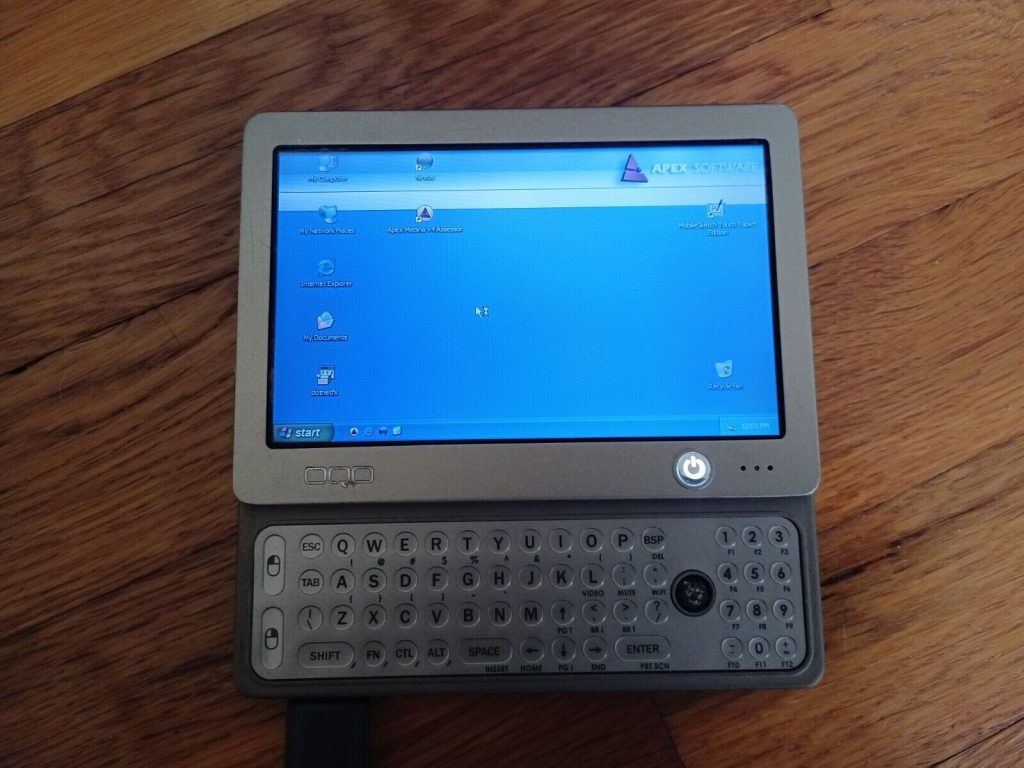These days, having a portable computing device you can hold and operate in your hand means you want to own a smartphone or tablet. However, in the mid-2000s, before the smartphone era, Microsoft tried to help launch the ultra-mobile PC (UMPC) as a platform.
We could go on about the entire history of the failed UMPC platform, but maybe we will save that for another article. Today, we are going to concentrate on one specific startup company, OQO, that only made UMPC devices. The thing is, while they were not ultimately successful in terms of sales, you may have seen one and not realized it (more on that later).
OQO was formed in 2000 and was co-founded by former Apple team member Jory Bell. In October 2004, the company shipped its first product, the OQO Model 1. In an interview with CNET at the time, Jory stated the theme behind the OQO’s design:
We wanted to make sure that you have all of the functionality of the thin-and-light notebook, but at the size of a Palm Pilot . . . It’s a huge difference. The fact that you can slip it into your pocket means I can take it anywhere. Even with the laptop, there’s a threshold where you wouldn’t want to carry a bag around.
The OQO Model 1 was 5 inches wide, 3 1/2 inches long, and 1 inch thick, and it weighed 0.9 pounds. The device’s small size got it noticed at the time by the Guinness World Records, which named it the smallest fully-featured PC ever made.
It ran Windows XP, with a 5-inch screen and a retractable keyboard. Inside, there was a 1 GHz Transmeta Crusoe processor, a 20GB hard drive, and 256 MB of RAM. Its battery could last three hours on a single charge. The OQO Model 1 also had a huge price tag of $1,899, which was far more than most Windows XP notebooks at the time.
Perhaps the most interesting thing about the OQO Model 1 was not that it was a small form factor Windows PC. It was the fact that this device, made by a small San Fransisco startup, started appearing in lots of TV shows soon after it launched.
The OQO appeared in shows like 24, Chuck, Lie to Me, and more. My personal favorite TV show appearance for the device was when Dr. Rodney McKay (played by real-life science and technology fan David Hewlett) used the OQO to hack into alien computers on the show Stargate Atlantis.
OQO launched the Model 1+ in September 2005, but it only had a few hardware improvements, like boosting the storage to 30GB and boosting the memory to 512 MB of RAM.
In January 2007, just a few months before the launch of the first iPhone, the OQO Model 2 was first shown off by Microsoft co-founder Bill Gates during his keynote speech at CES 2007. The 1-pound Model 2 was a major reboot of the PC’s design, with a sliding backlit keyboard, a small nub on the right side to move the cursor, and keys to simulate using a mouse’s keys on the left.
There was still a 5-inch screen, but it could now run Windows Vista as well as Windows XP. It could even connect to EVDO cell networks from Sprint and Verizon. However, prices for the device were still on the high side, starting at $1,499.
OQO had a number of different versions of the Model 2, with different storage sizes (and SSD options for the first time), along with varying amounts of RAM and different clock speeds for its VIA-based processor. The battery life was still around 3 hours, but you could purchase a battery extender pack to increase the amount of time to six hours. Another version, the OQO Model e2, launched later in 2007 in Europe and Asia and supported HSDPA cellular phone network connections.
Unfortunately for the OQO Model 2, it got hit with the launch of the first iPhone from Apple in June 2007, which offered many of the same features in an even smaller package and a cheaper price. No amount of product placement on TV shows would be able to save the company. In 2009, OQO filed for bankruptcy, and that was that for its device. It certainly looked cool enough to be used by Dr. McKay in the Pegasus galaxy, but not too many real people on planet Earth were interested.

